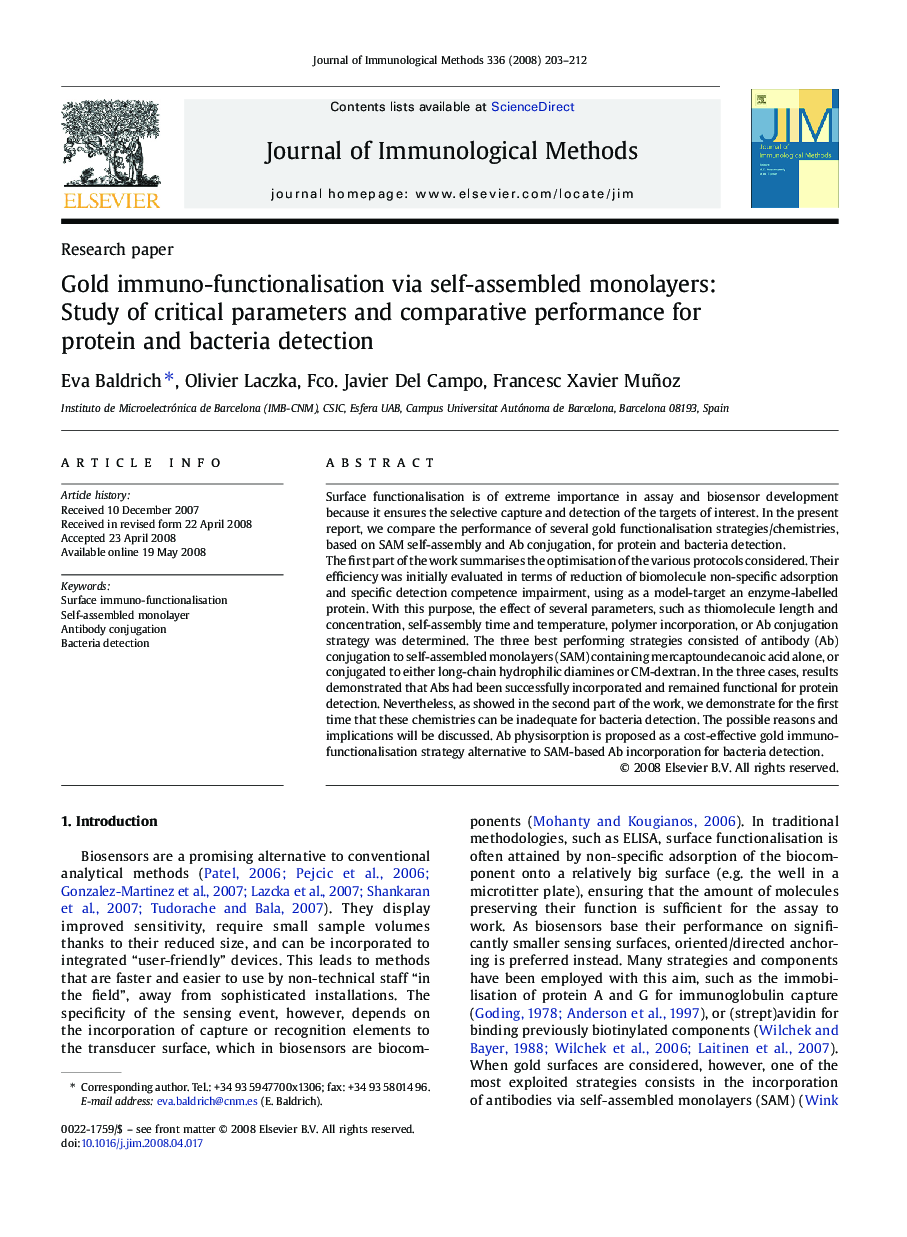| Article ID | Journal | Published Year | Pages | File Type |
|---|---|---|---|---|
| 10889334 | Journal of Immunological Methods | 2008 | 10 Pages |
Abstract
The first part of the work summarises the optimisation of the various protocols considered. Their efficiency was initially evaluated in terms of reduction of biomolecule non-specific adsorption and specific detection competence impairment, using as a model-target an enzyme-labelled protein. With this purpose, the effect of several parameters, such as thiomolecule length and concentration, self-assembly time and temperature, polymer incorporation, or Ab conjugation strategy was determined. The three best performing strategies consisted of antibody (Ab) conjugation to self-assembled monolayers (SAM) containing mercaptoundecanoic acid alone, or conjugated to either long-chain hydrophilic diamines or CM-dextran. In the three cases, results demonstrated that Abs had been successfully incorporated and remained functional for protein detection. Nevertheless, as showed in the second part of the work, we demonstrate for the first time that these chemistries can be inadequate for bacteria detection. The possible reasons and implications will be discussed. Ab physisorption is proposed as a cost-effective gold immuno-functionalisation strategy alternative to SAM-based Ab incorporation for bacteria detection.
Related Topics
Life Sciences
Biochemistry, Genetics and Molecular Biology
Biotechnology
Authors
Eva Baldrich, Olivier Laczka, Fco. Javier Del Campo, Francesc Xavier Muñoz,
